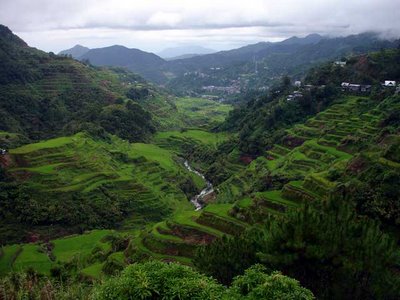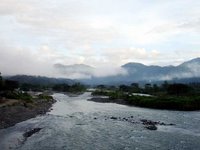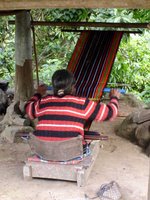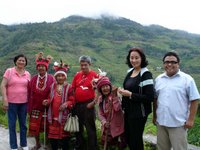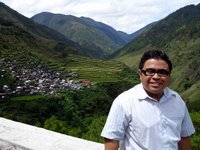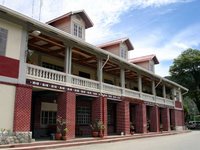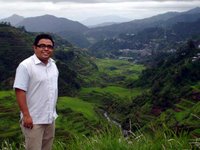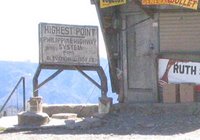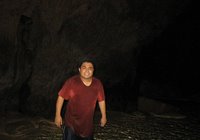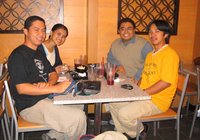Ito ay mga gabay para sa mga nais bumisita sa Sagada. Basahin at intindihin ang mga sumusunod bago tumungo doon:
1. Igalang ang lokal na kultura at pamumuhay ng komunidad. Panatilihin ang distansya mula sa mga ritwal o ano mang mga lugar na tinutukoy na sagrado. Huwag hawakan o buksan ang mga kabaong sa kuweba ng libingan. Huwag tatangkaing sumali o kunan ng litrato o bidyo ang ano mang ritwal na walang direktang pahintulot mula sa namumunong nakatatanda. Huwag abalahin ang Misa sa simbahan o kumuha ng mga bidyo o kaya litrato sa loob at paligid ng simbahan sa oras ng Misa.
2. Igalang ang bawat tao sa komunidad. Ang mga taga-Sagada ay hindi mga eksibit o palabas sa isang museo o zoo. Humingi ng pahintulot bago kumuha ng mga litrato o bidyo ng mga tao, lalo na ang mga nakatatanda. Huwag itanong kung "Nasaan ang mga Igorot?" Kami ang mga Igorot. Sinusuot namin ang mga tradisyunal na kasuotan para sa mga mahalagang okasyon. Huwag ninyo asahan na magpakuha kami ng litrato suot ang bahag o tapis para sa inyo, dahil hindi namin gawain iyon.
3. Kumuha ng mga kinakailangang permit o pahintulot para sa pagkuha ng litrato, pelikula, o panayam sa komunidad para sa pananaliksik. Makipag-ugnayan sa Office of the Mayor at siguraduhing ikaw ay kumuha ng permit at nagbayad ng ano mang mga kinakailangang bayarin. Ang permit na ito ang magtutukoy kung ang iyong aktibidad ay pinapayagan o hindi sa komunidad. Ang mga gabay (guide) ay hindi pinahihintulutan na kumuha ng permit para sa nasaad na mga gawain.
4. Pamahalaan ang iyong mga inaasahan (manage expectations). Ang Sagada ay isang komunidad, hindi isang museo. Kung gusto mong makita ang buhay namin noong unang panahon, may isang mahusay na museo sa Bontoc; bisitahin niyo ito. Huwag isipin o sabihin na "nawala na ang aming kultura" dahil lang sa hindi na kami nabubuhay sa mga tradisyunal na mga bahay o nagsusuot ng wanes at tapis para sa pang-araw-araw. Kami ay mga katutubo at malalim ang aming pagkakakabit sa aming mga tradisyon at kultura. Kami din ay moderno at may pinag-aralan, kumportable sa anumang buhay o propesyonal na kapaligiran na inaalok ng mundo.
5. Maglakad hangga't maaari. Ang paglalakad ay isang mahalagang bahagi ng karanasan sa Sagada. Ang hangin dito ay sariwa at malinis; hindi ka gaanong pagpapawisan. Ang tanawin ay kamangha-mangha, at mas ikalulugod mo ang mga ito kung ikaw ay maglalakad kaysa sa nakasakay ka sa isang metal na kahon. Ang Sagada ay isang maliit na bayan at magkakalapit ang mga lugar dito. Kung ikaw ay lalabas para mamili sa mga tindahan, maglakad ka. Kung ikaw ay pupunta sa mga kainan galing sa hotel, maglakad ka. Kung ang iyong hotel ay nasa labas ng bayan, dalhin lamang ang sasakyan hanggang sa pasukan ng bayan at maglakad ka mula doon. Kung may sapat kang lakas para pumasok ng mga kuweba, mayroon ka din lakas para maglakad papunta sa mga kuweba. Maglakad ka. Mabuti ito para sa iyo, mas masaya, mas marami kang makikita, at makakabawas sa aming problema sa trapiko.
6. Huwag mag-aksaya ng tubig. May kakulangan ng tubig sa Sagada, lalo na sa panahon ng tag-init at mga panahong dagsa ang mga turista. Para matugunan ang mga pangangailang ng mga turista sa pag-konsumo ng tubig, ito ay maaaring humantong sa paggamit ng tubig mula sa aming mga bukid at palayan kung saan ito ay lubhang kinakailangan para sa aming mga pananim. Kung ikaw ay aakyat ng mga bundok o papasok sa mga kweba, mas mainam na maligo ka pagkatapos at hindi bago pumunta. Mangyaring maligo nang mabilis at magtipid ng tubig.
7. Huwag magkalat ng basura. Ang pagtapon ng basura sa daan o sa ano mang lugar ay kahiya-hiya, at hindi katanggap-tanggap: huwag kang pasaway. Sa kasalukuyan, ang Sagada ay walang municipal waste disposal system; bawat pamilya at negosyo ang nangangalaga ng sarili nitong basura. Kaya bawasan niyo ang basura niyo. Hangga't maaari, kung ano ang dala ninyong basura ay dapat dalhin ito pag-alis para maitapon sa tamang lugar.
8. Maging mabait sa mga taong namamahala ng mga kainan. Maliliit ang mga kusina ng mga kainan namin, at hindi namin kaya magluto para sa marami. Kapag sinabi naming wala na kaming maihahain na pagkain, ito ay nangangahulugang naubos na ang pinamili namin noong araw ng palengke. Hindi kami naghahain ng mga pagkaing linggo o kaya buwan na nakatago sa freezer. Para makakuha ng mas mahusay na serbisyo, mag-order kayo ng pagkain ng hindi bababa sa 3 o 4 na oras bago kayo kumain. Sa ganoong paraan, mayroon kaming sapat na oras para ihanda ang iyong pagkain at maihain ito agad pagdating mo sa kainan.
9. Maging responsable sa paggamit ng sasakyan. Ang aming mga kalye ay makitid, at ang pagparada sa daan ay lumilikha ng malubhang problema sa trapiko. Sa katunayan, ang pagparada sa daan ay ipinagbabawal ng lokal na ordinansa. Sundin ang mga batas, kahit na hindi sumusunod and iba o kaya ay may magsabi sayo na maaari kang pumarada dahil pag bawal ay bawal. Kung sinabihan kang umatras o tumabi para makadaan ang ibang sasakyan, lalo na ang mga bus, makisama ka. Kung ang pagparada mo ay nakakaharang sa trapiko, umalis ka at ilipat mo ang sasakyan mo sa tamang paradahan. Huwag magsakay o magbaba sa gitna ng daan. Tumabi ka para makadaan ang ibang sasakyan.
10. Tulungan kaming mapanatili kang ligtas. Ang Sagada ay isang bayan sa kabundukan na puno ng mga yungib, bangin, kanyon, sapa at mga gubat. Ang mga ito ay magaganda, pero maari ka ring madisgrasya o kaya ay mawala. Ginagawa namin ang lahat ng aming makakaya para panatilihin kang ligtas, pero kailangan din namin ang tulong mo. Kailangan mong umupa ng gabay (guide) bago ka payagang pumasok sa kweba. Para ito sa kaligtasan mo, hindi para kumita kami. Mangyaring nakarehistrong gabay (accredited guide) lang ang upahan, at respetuhin ang nakatakdang bilang ng bisita sa bawat gabay (guide to guest ratio). Hindi namin pinapayagan ang mga bata o minor de edad na maging gabay, para sa kanilang kaligtasan at para na rin sa iyo. Mangyaring huwag umupa ng mga bata bilang gabay. Iniririkuminda din namin ang mga gabay para sa paglalakad o pamumundok. Kung talagang pinili mong maglakad nang walang gabay, maging responsable ka at sabihan mo ang mga tao sa guest house kung saan mo planong pumunta at kung anong oras mo planong bumalik. Magdala ka ng mobile phone at siguraduhing may listahan ka ng mga emergency number. Kung mangyari ang di inaasahan at mawala ka, hahanapin ka namin, anumang oras ng araw o gabi at sa anumang panahon. Pag-alam namin kung saan magsisimula, magiging malaki itong tulong sa amin. Kung balak mong matulog sa ibang lugar, makipag-ugnayan sa guest house mo at ipaalam sa kanila ang iyong balak, dahil sila ay magbibigay-ulat na nawawala ka at kami ay lalabas para hanapin ka.
11. Maging disente sa ano mang paraan. Ang Sagada ay isang maliit at konserbatibong bayan, at ito ang nais namin. Maaaring huwag magsuot ng mga damit na para sa pamamasyal sa dagat, at huwag rin magpapakita ng mga pisikal na ekspresyon na maaaring magpahayag ng malisya sa publiko. Hindi kami kilala para sa nightlife: sarado na ang mga tindahan sa Sagada ng alas-10 ng gabi. Kung gusto mong mag-party sa gabi, humanap ka nalang ng ibang lugar na pupuntahan. Walang commercial sex dito, kaya huwag nang mag-aksaya ng oras sa paghahanap nito.
12. Tumulong sa pagpapanatili ng ang ating kapaligiran. Lahat ng mga bisita (turista at hindi residente ng Sagada) ay dapat magrehistro sa Municipal Tourist Information Center at magbayad Php35.00 para sa Environmental Fee. Ang iyong resibo ay titignan bago ka pumasok sa mga kuweba at iba pang mga lugar na dinadayo ng turista.
Ang mga panuntunang ito ay inihanda ni Steve Rogers at Tracey Santiago, at isinalin namin ni Tracey sa Filipino. Ito ang orihinal na latha sa Ingles:
These guidelines were prepared by Steve Rogers and Tracey Santiago, which Tracey and I translated to Filipino. Here is the original English text:
GENERAL GUIDELINES FOR VISITORS OF SAGADA
by Steve Rogers and Tracey Santiago
1. Please respect the culture. Keep a distance from rituals or any sites you are told are sacred. Do not touch or disturb coffins or burial sites. Do not attempt to join or film any ritual without direct permission from the presiding elders. Do not disturb mass in the church or shoot videos/photos in or around the church during mass.
2. Please respect the people. Sagadans are not exhibits in a museum or zoo. Ask permission before taking pictures or video of people, especially elders. Please don’t ask us “where are the Igorots”. We are the Igorots. We do dress in traditional clothing for special occasions, but please don’t expect any of us to pose in traditional clothing for pictures, because we don’t do that.
3. Please secure necessary permits. If you need to do field research, interviews in the community, conduct pictorials or film anyone and any place in Sagada, please go to the Office of the Mayor and make sure you secure a permit and pay any necessary fees. This permit will determine if your activity is allowed or not in the community. Guides are not allowed to secure any permit for such activities.
4. Please manage your expectations. Sagada is a community, not a museum. If you want to see the way we lived a century ago, there’s an excellent museum in Bontoc; please visit it. Don’t think, or say, that we have “lost our culture” because we no longer live in traditional houses or dress daily in wanes and tapis. We are indigenous people and we are deeply attached to our traditions and culture. We are also modern, well educated people who are comfortable in any living or professional environment the world offers.
5. Please walk whenever possible. Walking is an essential part of the Sagada experience. The air here is cool and clean; you won’t get all sweaty. The views are spectacular, and you’ll enjoy them more on foot than crammed into a metal box. Sagada is a small town and places are close together. If you are going out to browse the shops, walk. If you are going from a hotel to a restaurant, walk. If your hotel is outside the town, drive to the edge of town and walk. If you’re strong enough to walk through the caves, you’re strong enough to walk to the caves. Walk. It’s good for you, you’ll see and enjoy more, and you’ll help reduce our traffic problem.
6. Please conserve water. Sagada suffers from water shortages, especially during dry season and periods of peak tourist flow. This can lead to diversion of water from our farms and rice terraces, where it is desperately needed, to support tourism. If you are going hiking or caving, bathe after, not before. Please bathe quickly and with as little water as you can.
7. Please manage your garbage. Littering and tossing garbage outdoors are unacceptable and disgraceful: just don’t do it. Sagada has no municipal waste disposal system; every household and business has to manage its own waste output. Try to minimize the garbage you generate. As much as possible, what comes here with you should leave with you.
8. Please be kind to the people in our kitchens. Our restaurants are small kitchens that can only handle a few meals. When we say, we don’t have food anymore, it means the stock we bought during the market day have already run out. We don’t serve food frozen from weeks or months ago. To get better service, order your food at least 3 or 4 hours before your meal. That way, we have more time to prepare your food and serve it as soon as you arrive in the restaurant.
9. Please use your vehicle responsibly. Our streets are narrow, and on-street parking creates a serious traffic problem. Parking on the street is prohibited by local ordinance. Please follow the law, even when others don’t or if someone tells you it’s ok to park on the street. If you’re asked to back up or pull to the side of the road to allow passage of a bus or other oncoming vehicles, please cooperate. If you are parked in a way that obstructs traffic, move. Do not load/unload in the middle of a road. Pull to the side so that other vehicles can pass.
10. Please help us keep you safe. Sagada is a mountain town filled with caves, cliffs, canyons, streams and forests. They are beautiful but people can and do get hurt or lost. We do our best to keep you safe, but we need your help. Guides are required in the caves for your safety, not for our profit. Please hire accredited guides and respect the prescribed guide to guest ratio. We do not allow children to guide, for their safety and yours, so please do not hire children as guides. We strongly recommend guides for hiking or exploring. If you choose to hike without a guide, please be responsible and tell your guest house where you plan to go and what time you plan to be back. Bring a mobile phone and make note of emergency phone numbers. If you go missing we will look for you, at any time of the day or night and in any weather. Knowing where to start is a huge help. If you plan to sleep somewhere other than your guest house, get in touch and let them know, because they will report you missing and we will go out looking for you.
11. Please be modest. This is a small, conservative town, and we like it that way. Please save the revealing clothing for the beach, and save the displays of affection for your private space. We are not known for nightlife: business in Sagada closes at 10PM. If you like to party all night that’s fine, but you’ll have to do it somewhere else. There is no commercial sex here, so please don’t waste your time looking for it.
12. Please give your share to help us preserve our environment. All visitors (tourists, non-Sagada residents) must register at the Municipal Tourist Information Center and pay Php35.00 for the Environmental Fee. Your receipt will be checked upon entering caves and other tourist areas.
1. Igalang ang lokal na kultura at pamumuhay ng komunidad. Panatilihin ang distansya mula sa mga ritwal o ano mang mga lugar na tinutukoy na sagrado. Huwag hawakan o buksan ang mga kabaong sa kuweba ng libingan. Huwag tatangkaing sumali o kunan ng litrato o bidyo ang ano mang ritwal na walang direktang pahintulot mula sa namumunong nakatatanda. Huwag abalahin ang Misa sa simbahan o kumuha ng mga bidyo o kaya litrato sa loob at paligid ng simbahan sa oras ng Misa.
2. Igalang ang bawat tao sa komunidad. Ang mga taga-Sagada ay hindi mga eksibit o palabas sa isang museo o zoo. Humingi ng pahintulot bago kumuha ng mga litrato o bidyo ng mga tao, lalo na ang mga nakatatanda. Huwag itanong kung "Nasaan ang mga Igorot?" Kami ang mga Igorot. Sinusuot namin ang mga tradisyunal na kasuotan para sa mga mahalagang okasyon. Huwag ninyo asahan na magpakuha kami ng litrato suot ang bahag o tapis para sa inyo, dahil hindi namin gawain iyon.
3. Kumuha ng mga kinakailangang permit o pahintulot para sa pagkuha ng litrato, pelikula, o panayam sa komunidad para sa pananaliksik. Makipag-ugnayan sa Office of the Mayor at siguraduhing ikaw ay kumuha ng permit at nagbayad ng ano mang mga kinakailangang bayarin. Ang permit na ito ang magtutukoy kung ang iyong aktibidad ay pinapayagan o hindi sa komunidad. Ang mga gabay (guide) ay hindi pinahihintulutan na kumuha ng permit para sa nasaad na mga gawain.
4. Pamahalaan ang iyong mga inaasahan (manage expectations). Ang Sagada ay isang komunidad, hindi isang museo. Kung gusto mong makita ang buhay namin noong unang panahon, may isang mahusay na museo sa Bontoc; bisitahin niyo ito. Huwag isipin o sabihin na "nawala na ang aming kultura" dahil lang sa hindi na kami nabubuhay sa mga tradisyunal na mga bahay o nagsusuot ng wanes at tapis para sa pang-araw-araw. Kami ay mga katutubo at malalim ang aming pagkakakabit sa aming mga tradisyon at kultura. Kami din ay moderno at may pinag-aralan, kumportable sa anumang buhay o propesyonal na kapaligiran na inaalok ng mundo.
5. Maglakad hangga't maaari. Ang paglalakad ay isang mahalagang bahagi ng karanasan sa Sagada. Ang hangin dito ay sariwa at malinis; hindi ka gaanong pagpapawisan. Ang tanawin ay kamangha-mangha, at mas ikalulugod mo ang mga ito kung ikaw ay maglalakad kaysa sa nakasakay ka sa isang metal na kahon. Ang Sagada ay isang maliit na bayan at magkakalapit ang mga lugar dito. Kung ikaw ay lalabas para mamili sa mga tindahan, maglakad ka. Kung ikaw ay pupunta sa mga kainan galing sa hotel, maglakad ka. Kung ang iyong hotel ay nasa labas ng bayan, dalhin lamang ang sasakyan hanggang sa pasukan ng bayan at maglakad ka mula doon. Kung may sapat kang lakas para pumasok ng mga kuweba, mayroon ka din lakas para maglakad papunta sa mga kuweba. Maglakad ka. Mabuti ito para sa iyo, mas masaya, mas marami kang makikita, at makakabawas sa aming problema sa trapiko.
6. Huwag mag-aksaya ng tubig. May kakulangan ng tubig sa Sagada, lalo na sa panahon ng tag-init at mga panahong dagsa ang mga turista. Para matugunan ang mga pangangailang ng mga turista sa pag-konsumo ng tubig, ito ay maaaring humantong sa paggamit ng tubig mula sa aming mga bukid at palayan kung saan ito ay lubhang kinakailangan para sa aming mga pananim. Kung ikaw ay aakyat ng mga bundok o papasok sa mga kweba, mas mainam na maligo ka pagkatapos at hindi bago pumunta. Mangyaring maligo nang mabilis at magtipid ng tubig.
7. Huwag magkalat ng basura. Ang pagtapon ng basura sa daan o sa ano mang lugar ay kahiya-hiya, at hindi katanggap-tanggap: huwag kang pasaway. Sa kasalukuyan, ang Sagada ay walang municipal waste disposal system; bawat pamilya at negosyo ang nangangalaga ng sarili nitong basura. Kaya bawasan niyo ang basura niyo. Hangga't maaari, kung ano ang dala ninyong basura ay dapat dalhin ito pag-alis para maitapon sa tamang lugar.
8. Maging mabait sa mga taong namamahala ng mga kainan. Maliliit ang mga kusina ng mga kainan namin, at hindi namin kaya magluto para sa marami. Kapag sinabi naming wala na kaming maihahain na pagkain, ito ay nangangahulugang naubos na ang pinamili namin noong araw ng palengke. Hindi kami naghahain ng mga pagkaing linggo o kaya buwan na nakatago sa freezer. Para makakuha ng mas mahusay na serbisyo, mag-order kayo ng pagkain ng hindi bababa sa 3 o 4 na oras bago kayo kumain. Sa ganoong paraan, mayroon kaming sapat na oras para ihanda ang iyong pagkain at maihain ito agad pagdating mo sa kainan.
9. Maging responsable sa paggamit ng sasakyan. Ang aming mga kalye ay makitid, at ang pagparada sa daan ay lumilikha ng malubhang problema sa trapiko. Sa katunayan, ang pagparada sa daan ay ipinagbabawal ng lokal na ordinansa. Sundin ang mga batas, kahit na hindi sumusunod and iba o kaya ay may magsabi sayo na maaari kang pumarada dahil pag bawal ay bawal. Kung sinabihan kang umatras o tumabi para makadaan ang ibang sasakyan, lalo na ang mga bus, makisama ka. Kung ang pagparada mo ay nakakaharang sa trapiko, umalis ka at ilipat mo ang sasakyan mo sa tamang paradahan. Huwag magsakay o magbaba sa gitna ng daan. Tumabi ka para makadaan ang ibang sasakyan.
10. Tulungan kaming mapanatili kang ligtas. Ang Sagada ay isang bayan sa kabundukan na puno ng mga yungib, bangin, kanyon, sapa at mga gubat. Ang mga ito ay magaganda, pero maari ka ring madisgrasya o kaya ay mawala. Ginagawa namin ang lahat ng aming makakaya para panatilihin kang ligtas, pero kailangan din namin ang tulong mo. Kailangan mong umupa ng gabay (guide) bago ka payagang pumasok sa kweba. Para ito sa kaligtasan mo, hindi para kumita kami. Mangyaring nakarehistrong gabay (accredited guide) lang ang upahan, at respetuhin ang nakatakdang bilang ng bisita sa bawat gabay (guide to guest ratio). Hindi namin pinapayagan ang mga bata o minor de edad na maging gabay, para sa kanilang kaligtasan at para na rin sa iyo. Mangyaring huwag umupa ng mga bata bilang gabay. Iniririkuminda din namin ang mga gabay para sa paglalakad o pamumundok. Kung talagang pinili mong maglakad nang walang gabay, maging responsable ka at sabihan mo ang mga tao sa guest house kung saan mo planong pumunta at kung anong oras mo planong bumalik. Magdala ka ng mobile phone at siguraduhing may listahan ka ng mga emergency number. Kung mangyari ang di inaasahan at mawala ka, hahanapin ka namin, anumang oras ng araw o gabi at sa anumang panahon. Pag-alam namin kung saan magsisimula, magiging malaki itong tulong sa amin. Kung balak mong matulog sa ibang lugar, makipag-ugnayan sa guest house mo at ipaalam sa kanila ang iyong balak, dahil sila ay magbibigay-ulat na nawawala ka at kami ay lalabas para hanapin ka.
11. Maging disente sa ano mang paraan. Ang Sagada ay isang maliit at konserbatibong bayan, at ito ang nais namin. Maaaring huwag magsuot ng mga damit na para sa pamamasyal sa dagat, at huwag rin magpapakita ng mga pisikal na ekspresyon na maaaring magpahayag ng malisya sa publiko. Hindi kami kilala para sa nightlife: sarado na ang mga tindahan sa Sagada ng alas-10 ng gabi. Kung gusto mong mag-party sa gabi, humanap ka nalang ng ibang lugar na pupuntahan. Walang commercial sex dito, kaya huwag nang mag-aksaya ng oras sa paghahanap nito.
12. Tumulong sa pagpapanatili ng ang ating kapaligiran. Lahat ng mga bisita (turista at hindi residente ng Sagada) ay dapat magrehistro sa Municipal Tourist Information Center at magbayad Php35.00 para sa Environmental Fee. Ang iyong resibo ay titignan bago ka pumasok sa mga kuweba at iba pang mga lugar na dinadayo ng turista.
Ang mga panuntunang ito ay inihanda ni Steve Rogers at Tracey Santiago, at isinalin namin ni Tracey sa Filipino. Ito ang orihinal na latha sa Ingles:
These guidelines were prepared by Steve Rogers and Tracey Santiago, which Tracey and I translated to Filipino. Here is the original English text:
GENERAL GUIDELINES FOR VISITORS OF SAGADA
by Steve Rogers and Tracey Santiago
1. Please respect the culture. Keep a distance from rituals or any sites you are told are sacred. Do not touch or disturb coffins or burial sites. Do not attempt to join or film any ritual without direct permission from the presiding elders. Do not disturb mass in the church or shoot videos/photos in or around the church during mass.
2. Please respect the people. Sagadans are not exhibits in a museum or zoo. Ask permission before taking pictures or video of people, especially elders. Please don’t ask us “where are the Igorots”. We are the Igorots. We do dress in traditional clothing for special occasions, but please don’t expect any of us to pose in traditional clothing for pictures, because we don’t do that.
3. Please secure necessary permits. If you need to do field research, interviews in the community, conduct pictorials or film anyone and any place in Sagada, please go to the Office of the Mayor and make sure you secure a permit and pay any necessary fees. This permit will determine if your activity is allowed or not in the community. Guides are not allowed to secure any permit for such activities.
4. Please manage your expectations. Sagada is a community, not a museum. If you want to see the way we lived a century ago, there’s an excellent museum in Bontoc; please visit it. Don’t think, or say, that we have “lost our culture” because we no longer live in traditional houses or dress daily in wanes and tapis. We are indigenous people and we are deeply attached to our traditions and culture. We are also modern, well educated people who are comfortable in any living or professional environment the world offers.
5. Please walk whenever possible. Walking is an essential part of the Sagada experience. The air here is cool and clean; you won’t get all sweaty. The views are spectacular, and you’ll enjoy them more on foot than crammed into a metal box. Sagada is a small town and places are close together. If you are going out to browse the shops, walk. If you are going from a hotel to a restaurant, walk. If your hotel is outside the town, drive to the edge of town and walk. If you’re strong enough to walk through the caves, you’re strong enough to walk to the caves. Walk. It’s good for you, you’ll see and enjoy more, and you’ll help reduce our traffic problem.
6. Please conserve water. Sagada suffers from water shortages, especially during dry season and periods of peak tourist flow. This can lead to diversion of water from our farms and rice terraces, where it is desperately needed, to support tourism. If you are going hiking or caving, bathe after, not before. Please bathe quickly and with as little water as you can.
7. Please manage your garbage. Littering and tossing garbage outdoors are unacceptable and disgraceful: just don’t do it. Sagada has no municipal waste disposal system; every household and business has to manage its own waste output. Try to minimize the garbage you generate. As much as possible, what comes here with you should leave with you.
8. Please be kind to the people in our kitchens. Our restaurants are small kitchens that can only handle a few meals. When we say, we don’t have food anymore, it means the stock we bought during the market day have already run out. We don’t serve food frozen from weeks or months ago. To get better service, order your food at least 3 or 4 hours before your meal. That way, we have more time to prepare your food and serve it as soon as you arrive in the restaurant.
9. Please use your vehicle responsibly. Our streets are narrow, and on-street parking creates a serious traffic problem. Parking on the street is prohibited by local ordinance. Please follow the law, even when others don’t or if someone tells you it’s ok to park on the street. If you’re asked to back up or pull to the side of the road to allow passage of a bus or other oncoming vehicles, please cooperate. If you are parked in a way that obstructs traffic, move. Do not load/unload in the middle of a road. Pull to the side so that other vehicles can pass.
10. Please help us keep you safe. Sagada is a mountain town filled with caves, cliffs, canyons, streams and forests. They are beautiful but people can and do get hurt or lost. We do our best to keep you safe, but we need your help. Guides are required in the caves for your safety, not for our profit. Please hire accredited guides and respect the prescribed guide to guest ratio. We do not allow children to guide, for their safety and yours, so please do not hire children as guides. We strongly recommend guides for hiking or exploring. If you choose to hike without a guide, please be responsible and tell your guest house where you plan to go and what time you plan to be back. Bring a mobile phone and make note of emergency phone numbers. If you go missing we will look for you, at any time of the day or night and in any weather. Knowing where to start is a huge help. If you plan to sleep somewhere other than your guest house, get in touch and let them know, because they will report you missing and we will go out looking for you.
11. Please be modest. This is a small, conservative town, and we like it that way. Please save the revealing clothing for the beach, and save the displays of affection for your private space. We are not known for nightlife: business in Sagada closes at 10PM. If you like to party all night that’s fine, but you’ll have to do it somewhere else. There is no commercial sex here, so please don’t waste your time looking for it.
12. Please give your share to help us preserve our environment. All visitors (tourists, non-Sagada residents) must register at the Municipal Tourist Information Center and pay Php35.00 for the Environmental Fee. Your receipt will be checked upon entering caves and other tourist areas.




